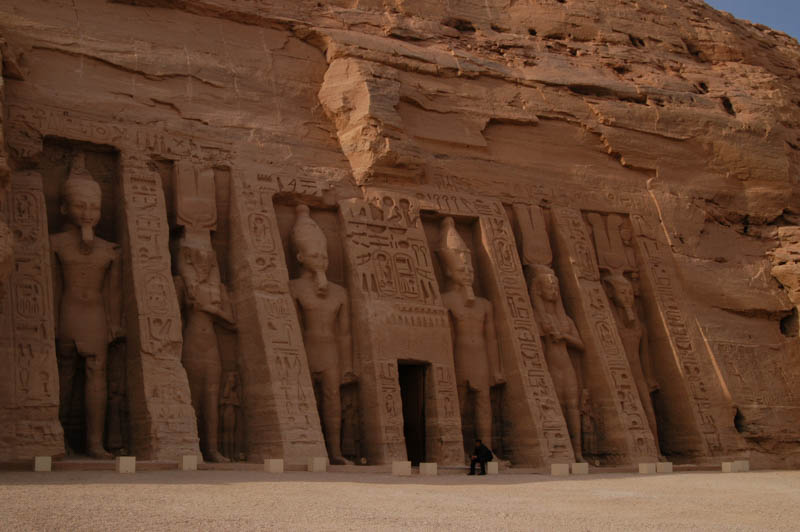Temple of Queen Nefertiri (King’s Wife’s Temple)
The massive temple of Ramesses II is not the only temple at Abu Simbel that was relocated by UNESCO. Just to the north stands a smaller but still imposing temple for Ramesses chief queen, Nefertari.

Don’t confuse Ramesses’ wife Nefertari with Nefertiti, who was the wife of Akhenaton in Tell-el-Amarna. The names are the same — and, indeed, they played much the same role as the deified wife of the king and wife of the god. This temple is also called “King’s Wife’s Temple”, and is fronted by six huge statues of Nefertari (as Hathor) and her husband Ramesses II, and smaller statues of their children. THe statues are only 9 meters high — less than half the size of the seated colossi of Ramesses’ own temple.
From left to right, the statues are Ramesses II (with the princes Meryatum and Meryre), Nefertari (with princess Meryamun and Henwati) and then Ramesses (with princes Amunhikhopshef and Rahrirwemenef). The same statues are in mirror image on the right. In contrast to most statues of pharaohs, Nefertari is shown as the same size as her husband and king. Usually, wives and children are both shown as tiny figures clustered around the knees of the king.

The facade is much more shallow than the King’s temple, and is only cared in about 24 meters into the cliff face. Again, like the King’s temple, it is completely reconstructed on this site from it’s original location down the hill, now under Lake Nasser.
The temple is dedicated to the cow-headed goddess Hathor of Abshek, and inside are many carvings showing the couple making sacrifices and offerings to the god in her human and in her cow-headed form. On the facade, Nefertari is shown as Hathor, distinguished by the solar disk between the horns of a cow on her headdress. Yellow is used extensively in the decorations of the temple, perhaps alluding to the title of Hathor as “The Golden One”.

